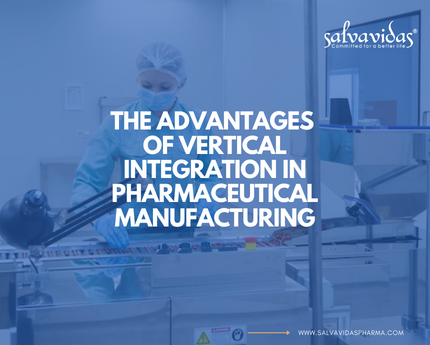
Introduction:
The pharmaceutical industry is one of the most complex and regulated industries in the world. From research and development to manufacturing and distribution, there are many moving parts that must work together seamlessly in order to bring new medications to market. Vertical integration, the integration of different stages of production into a single company, is a common strategy used by pharmaceutical companies to streamline their operations and increase their competitive advantage. In this article, we will take a closer look at the advantages of vertical integration in pharmaceutical manufacturing.
Advantages of Vertical Integration in Pharmaceutical Manufacturing:
Improved Quality Control:
One of the biggest benefits of vertical integration in pharmaceutical manufacturing is improved quality control. When different stages of production are integrated into a single company, it becomes easier to monitor and ensure the quality of each step in the process. This is especially important in the pharmaceutical industry, where quality control is essential for the safety and efficacy of medications. By vertically integrating, pharmaceutical companies can ensure that their products meet strict regulatory requirements and adhere to industry standards.
Reduced Costs:
Another advantage of vertical integration in pharmaceutical manufacturing is reduced costs. By integrating different stages of production, companies can eliminate the need for middlemen and reduce the costs associated with outsourcing. Additionally, by having control over the entire production process, companies can identify and eliminate inefficiencies, leading to further cost savings. This increased cost efficiency can translate into lower prices for consumers, making medications more accessible and affordable.
Increased Efficiency:
Vertical integration in pharmaceutical manufacturing can also lead to increased efficiency. By eliminating the need for coordination between different stages of production, companies can streamline their operations and reduce the time it takes to bring new medications to market. This increased efficiency can also result in higher productivity, as companies can allocate resources more effectively and respond more quickly to changes in demand.
Improved Research and Development:
Another advantage of vertical integration in pharmaceutical manufacturing is improved research and development. By having control over the entire production process, companies can better integrate their R&D efforts with their manufacturing and distribution operations. This can lead to a more streamlined and efficient research and development process, as well as a faster time to market for new medications.
Better Control Over the Supply Chain:
Finally, vertical integration in pharmaceutical manufacturing provides companies with better control over their supply chain. By having control over different stages of production, companies can more effectively manage their inventory levels and respond to changes in demand. This can help to reduce waste and improve the overall efficiency of the supply chain.
FAQs:
Q: What is vertical integration in pharmaceutical manufacturing?
A: Vertical integration in pharmaceutical manufacturing refers to the integration of different stages of production into a single company. This can include research and development, manufacturing, and distribution.
Q: Why is vertical integration important in the pharmaceutical industry?
A: Vertical integration is important in the pharmaceutical industry because it can lead to improved quality control, reduced costs, increased efficiency, improved research and development, and better control over the supply chain.
Q: What are some of the benefits of vertical integration in pharmaceutical manufacturing?
A: Some of the benefits of vertical integration in pharmaceutical manufacturing include improved quality control, reduced costs, increased efficiency, improved research and development, and better control over the supply chain.
Conclusion:
In conclusion, the advantages of vertical integration in pharmaceutical manufacturing are clear. By integrating different stages of production into a single company, pharmaceutical companies can improve quality control, reduce costs, increase efficiency, improve research and development, and gain better control over their supply chain. By adopting this strategy, companies can remain competitive in an ever-changing and challenging industry, ensuring that they are well-positioned to bring new and innovative medications to market. The Advantages of Vertical Integration in Pharmaceutical Manufacturing is a critical aspect of the pharmaceutical industry that companies must consider in order to stay ahead in an increasingly competitive marketplace. With its numerous benefits, vertical integration is a smart strategy for any pharmaceutical company looking to streamline its operations and enhance its competitive position.




0